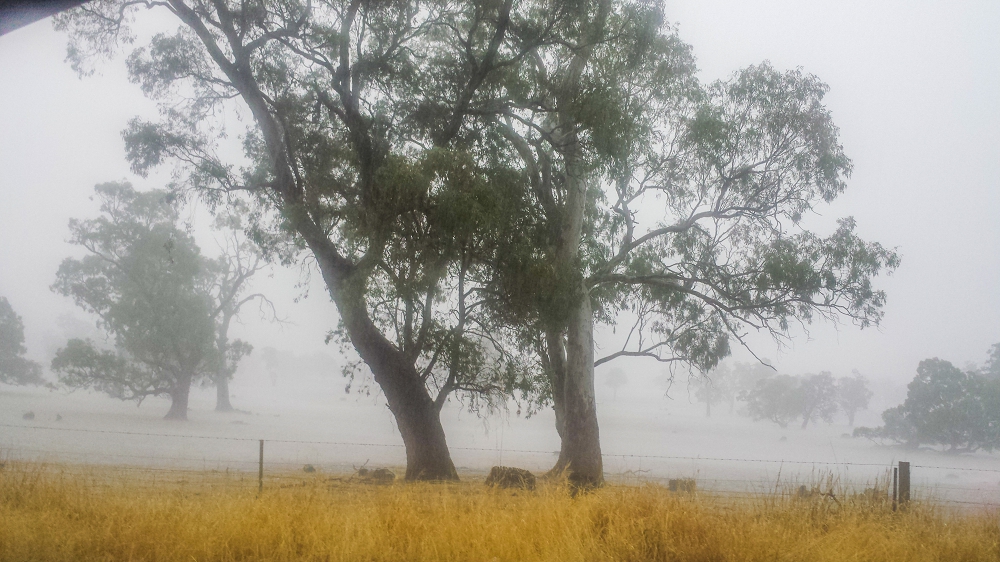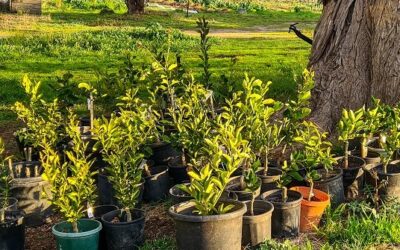Estimated reading time: 6 minutes
If you’re growing fruit, it’s increasingly likely you’ll have to manage some pretty wild weather at some point.
Dealing with the climate has always been part of fruit growing. But more frequent and more extreme weather events are one of the impacts of our warming planet.
Storms are not uncommon during the fruit season. We can remember the weather bureau making dire predictions on many occasions about massive storms or rain events heading our way.
And who can forget the 1-in-100 year rain event in the 2010/11 floods (it’s still fresh in our memory!). The wettest summer on record led to the demise of our cherry block.
Unfortunately, those once-rare events are becoming increasingly common. It’s now well documented that both the frequency and severity of events like heatwaves, floods, cyclones, and floods are increasing.
In 2011 the trees died in front of our eyes, with a crop of fruit on them (if you look at the ground behind the tree you can see a river of water running down the row and flattening the grass). It was a bad time for us.
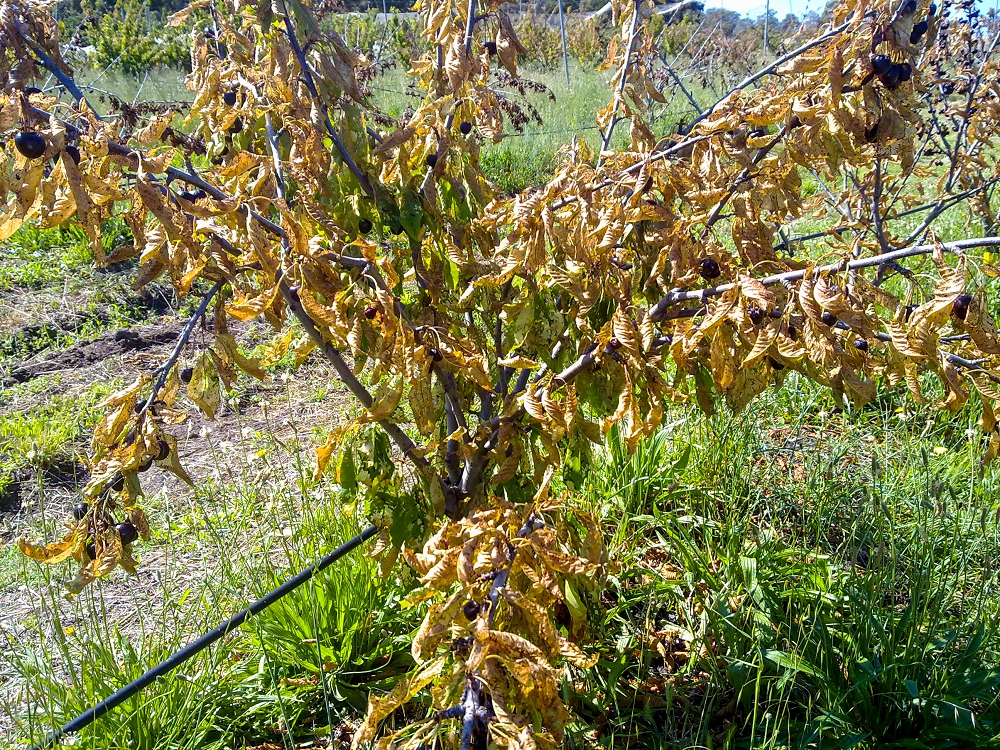
So when a storm is predicted you need to take it seriously and do everything you can to prepare. Depending on where you’re at in the season, this might include:
- picking any fruit that is close to being ripe,
- making sure nets are very secure,
- putting everything away outside,
- cleaning gutters, and
- closing windows.
Impacts of wild weather on fruit
Lots of rain can lead to cracking damage on fruit. It can also lead to outbreaks of black spot and brown rot—two of the big fungal diseases that can result in major losses in organic orchards.
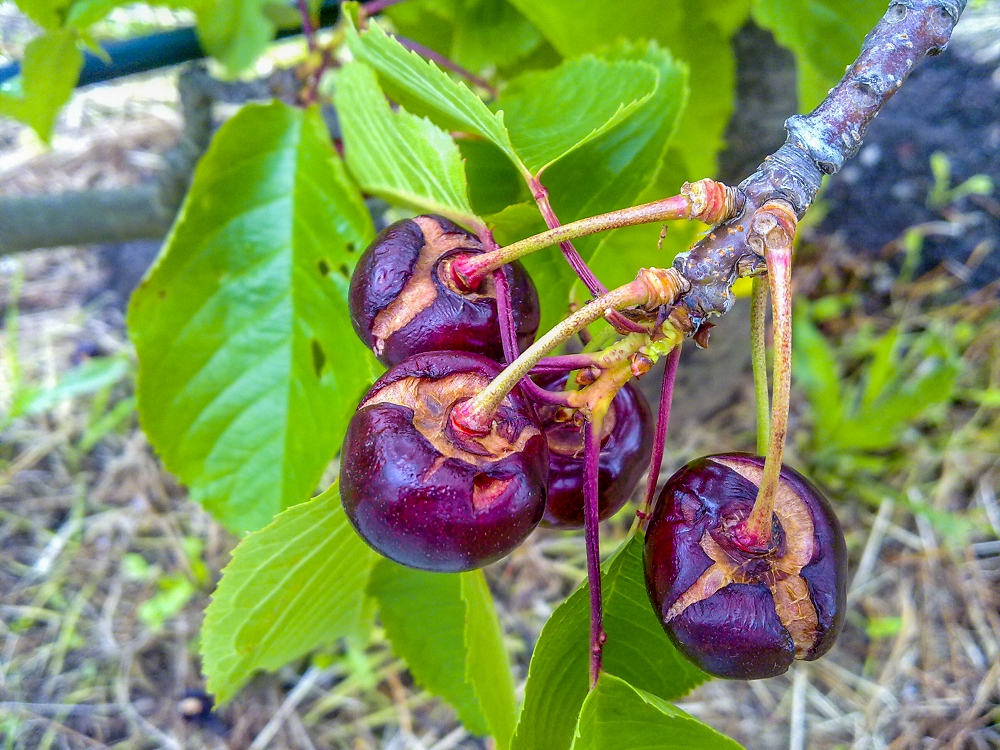
Storms often lead to infrastructure damage as well, and we’ve also had plenty of that in our years on the farm.
In one of our notable storms, this big old poplar tree succumbed to a combination of wet soil and high winds. Luckily our rainwater tank broke its fall, so it didn’t land on the house, or a car, or any people.
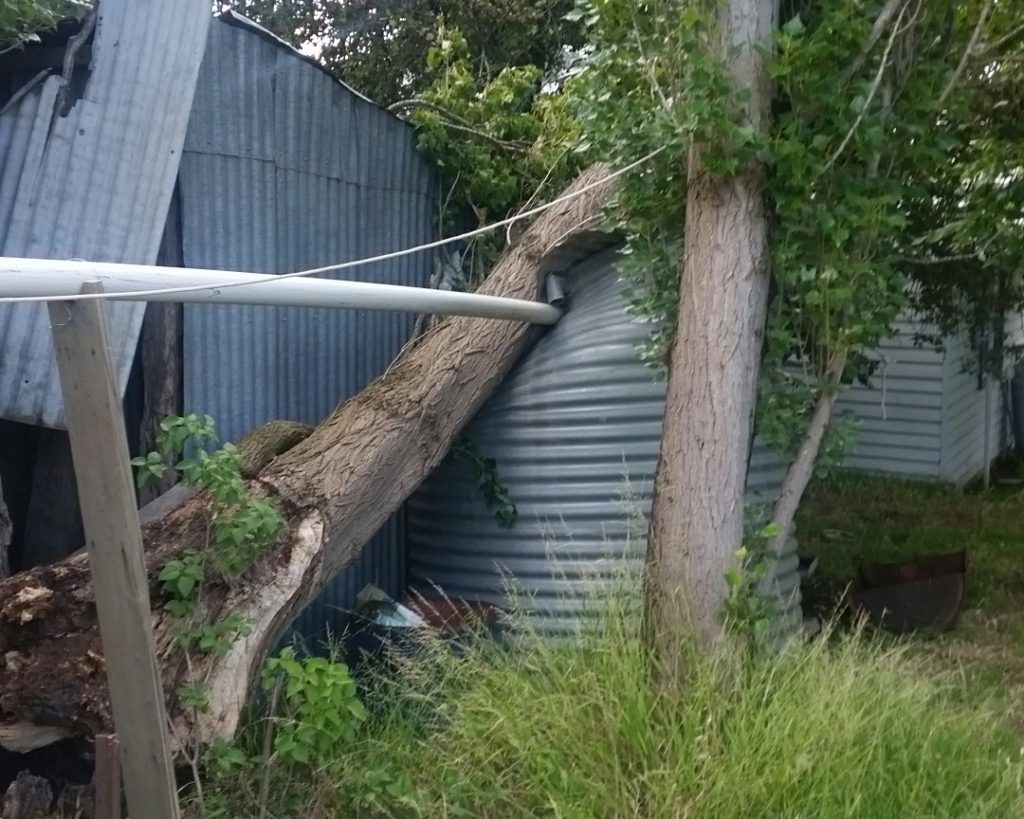
It often hits the news when farmers experience big losses, and we know from experience that it can take years to recover from such an event, both financially and emotionally. One of the most useful and practical things you can do to support your local farmers is to buy direct from them if possible, for example at your local farmers market if you’re lucky enough to have one close to you.
But home growers’ fruit losses don’t usually make the news, even though they can be just as devastating.
One of our Grow Great Fruit members suffered a huge hailstorm recently and lost ALL their fruit on 10 trees. You can see the size of the hailstones – and the devastating damage to the fruit trees – in the photo at the top of the blog.
“It was heartbreaking to see all my fruit on the ground. Not one fruit remained on the tree. All my berries and veggies in boxes were also completely torn and shredded. Nature can be so cruel sometimes.”
L.D., Grow Great Fruit member
Predicting the unpredictable
It’s pretty easy to predict that we’re going to be getting more storms in the future. But it’s almost impossible to predict when, or how badly, a storm might actually affect your place.
So how to protect your fruit trees and crops against damage?
There are a few things you can have in place to help reduce your chances of a complete wipe-out for moderate or severe storms (though it can be almost impossible to protect yourself against a cyclone).
Here are our top 5 suggestions:
- Well-built netting infrastructure is one of your best defences against hailstorms (as well as birds and a host of other problems). Even drape netting can help to protect the trees to some extent. You can explore common netting options here.
- Placing fruit trees in different micro-climates around your property. Hailstorms in particular can be incredibly localised. We’ve frequently experienced hail damage in one orchard while a block on the other side of the house has remained unscathed.
- Grow a wide range of different fruit types. Different weather events, e.g. massive rain deluges or heatwaves, will affect different fruit types in different ways.
- Aim for an extended harvest period. Fruit that is close to ripe when a storm hits is much more vulnerable than fruit that is months away from harvest.
- Increase the amount of organic matter in your soil. This increases the resilience of your soil and trees and helps them recover as quickly as possible after deluges, storms, and wild weather.
Being prepared for wild weather can definitely help to level out the highs and lows of fruit growing. It’s one of the things we talk about a lot in the Learn.Plan.Succeed course.
You may not have a crystal ball, but with some thought and planning, you can definitely become better at predicting the unpredictable!
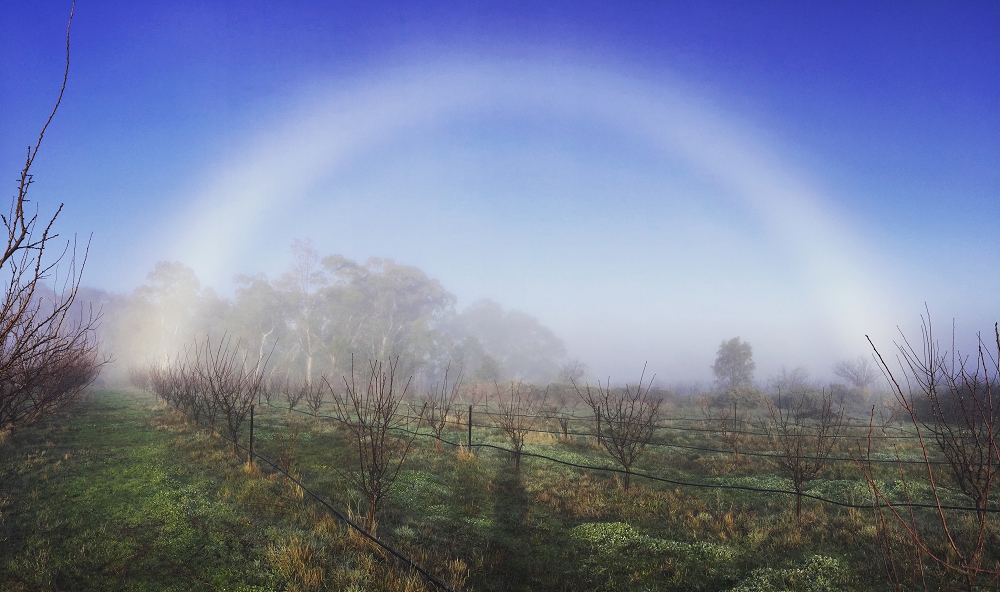
Related Articles
Providing frost shelter for fruit trees
Learn how to provide frost shelter for your fruit trees in spring to protect the flowers and fruit from damage.
How to buy a good fruit tree
Learn how to select a healthy fruit tree when you’re buying from a nursery, to give your trees the best possible start in life.
Choosing the right fruit tree to plant
Choosing the right fruit trees to plant can make a huge difference to how much food you grow and the value you get from your garden.

